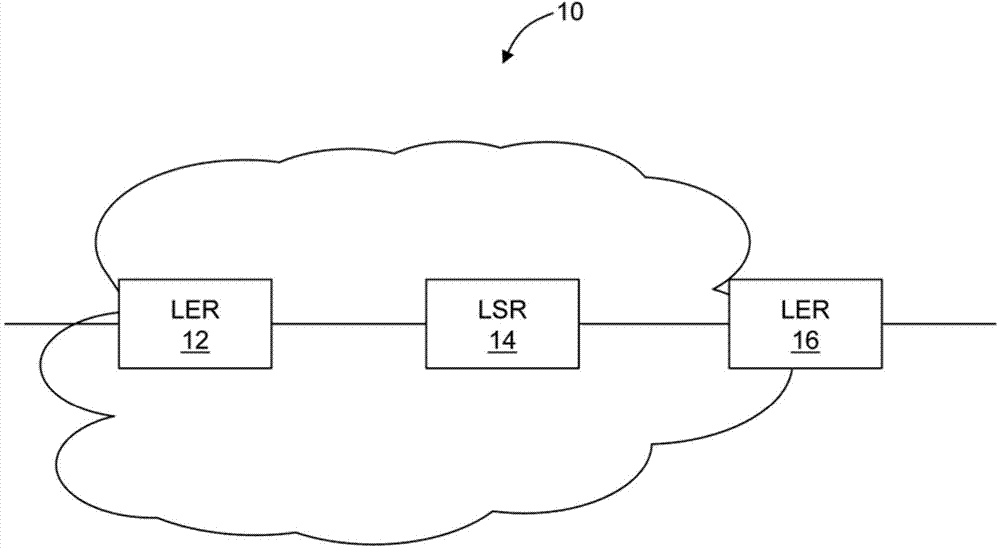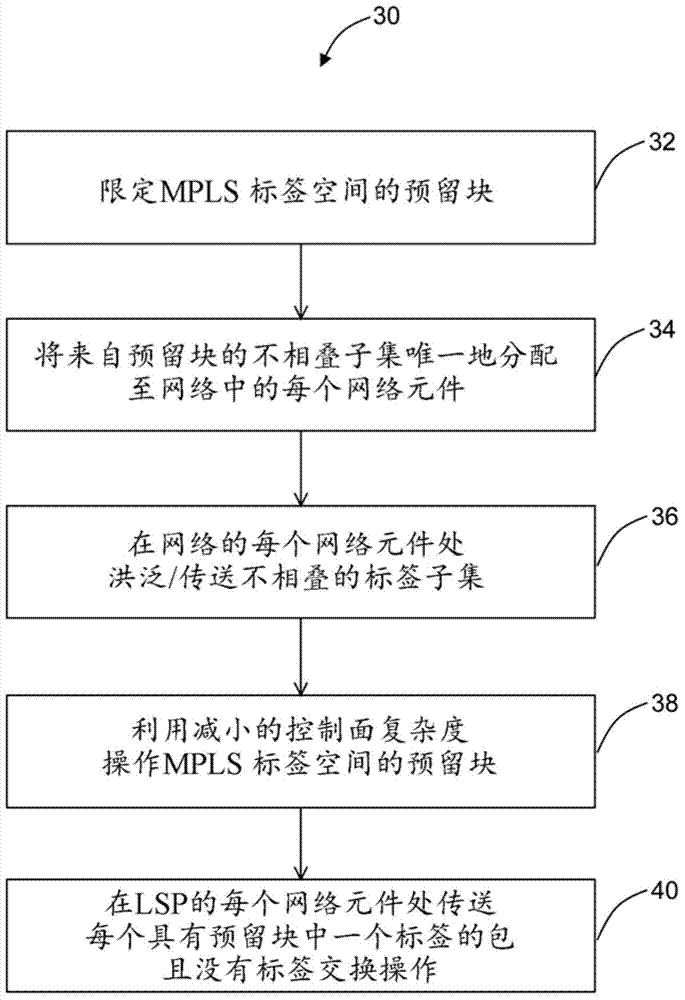Reduced complexity multiprotocol label switching
A multi-protocol label and label switching technology, applied in the field of multi-protocol label switching (MPLS) systems
- Summary
- Abstract
- Description
- Claims
- Application Information
AI Technical Summary
Problems solved by technology
Method used
Image
Examples
Embodiment Construction
[0013] In various exemplary embodiments, various changes have occurred in the current MPLS operating system such that a disjoint set of one or more MPLS labels is uniquely and specifically only associated with one switch, that is, each switching node is assigned a label from RFC3032 One or more non-overlapping labels in a 20-bit label space to bind to a specific service endpoint; this then allows these labels to embody the core properties of the Destination Address (DA) in the network subdomain for which they are used. A central property is that these DA labels are constant for a given transmission path over the entire sub-domain, thus remaining constant at any point in the network. This is possible because while flat addressing schemes have historically required huge label spaces to represent individual Internet Protocol (IP) prefixes, the increasing use of virtualization and accompanying network architectures means that labels need only be assigned to A node at the boundary ...
PUM
 Login to View More
Login to View More Abstract
Description
Claims
Application Information
 Login to View More
Login to View More - R&D
- Intellectual Property
- Life Sciences
- Materials
- Tech Scout
- Unparalleled Data Quality
- Higher Quality Content
- 60% Fewer Hallucinations
Browse by: Latest US Patents, China's latest patents, Technical Efficacy Thesaurus, Application Domain, Technology Topic, Popular Technical Reports.
© 2025 PatSnap. All rights reserved.Legal|Privacy policy|Modern Slavery Act Transparency Statement|Sitemap|About US| Contact US: help@patsnap.com



